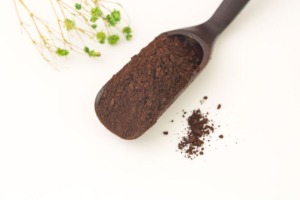Hypoglycaemic activity of Ganoderma polysaccharides
Hypoglycaemic effects of polysaccharides from Ganoderma lucidum have been exhibited in several in vitro and in vivo studies. Ganoderma polysaccharides showed a protective effect against alloxan-induced damage to pancreatic islets in vitro. Pre-treatment with intragastric Ganoderma polysaccharides (50-200mg/kg) for 10days produced hypoglycaemic effects via its scavenging ability to protect the pancreatic β-cells from alloxan-induced necrosis. Ganoderma polysaccharides (25-100mg/kg) given by single intraperitoneal injections to normal fasted mice reduced serum glucose levels after 3 and 6 h in a dose-dependent manner and increased insulin levels from 1h after administration via enhancing Ca2+ influx into pancreatic β cells.
In Addition, administration of Ganoderma polysaccharides produced hypoglycaemic effects and an improvement in lipid profile in streptozotocin-induced diabetic mice. The hypoglycaemic effect is mainly through preventing apoptosis of pancreatic β-cells and enhancing β-cells regeneration, and a modulation of serum insulin and hepatic mRNA levels of several key enzymes involved in gluconeogenesis and/or glycogenolysis, including GP, fructose-1,6-bisphosphatase (FBPase), phosphoenolpyruvate carboxykinase (PEPCK), and G6Pase isolated F31, a β-heteropolysaccharide with a weight-average molecular weight of 15.9kDa, from Ganoderma polysaccharides.
streptozotocin-induced diabetic mice. The hypoglycaemic effect is mainly through preventing apoptosis of pancreatic β-cells and enhancing β-cells regeneration, and a modulation of serum insulin and hepatic mRNA levels of several key enzymes involved in gluconeogenesis and/or glycogenolysis, including GP, fructose-1,6-bisphosphatase (FBPase), phosphoenolpyruvate carboxykinase (PEPCK), and G6Pase isolated F31, a β-heteropolysaccharide with a weight-average molecular weight of 15.9kDa, from Ganoderma polysaccharides.
The mechanism of action of Ganoderma polysaccharides F31 could be associated with down-regulation of the hepatic glucose regulated enzyme mRNA levels via AMPK activation, improvement of insulin resistance, and reduction of epididymal fat/body weight ratio. An integrative analysis of transcriptomics and proteomics data from the liver from F31-treated diabetic db/db mice found that genes in the glycolysis and gluconeogenesis pathways, insulin pathway, and lipid metabolism pathways showed significantly different expression compared to the untreated mice and that microRNAs probably participated in the regulation of the genes involved in glucose metabolism.
Hypoglycaemic activity of Ganoderma extracts
A water-extract of Ganoderma lucidum given to lean (+db/+m) and genetically obese/diabetic (+db/+db) mice lowered the serum glucose level in+db/+db mice after one week of treatment and in+db/+m mice after 4 weeks, through the down-regulation of the hepatic PEPCK gene expression. A study in alloxan-and steroid-induced diabetic rats showed that an extract of Ganoderma lucidum given orally at 200, 400, 600 and 800mg/kg/day for 7 days reduced plasma glucose levels, increased insulin sensitivity, and decreased lipid levels, and the suspected bioactive chemicals were polysaccharides available in the extract. A hypoglycaemic effect was also observed following administration of an alcoholic extract of Ganoderma lucidum (250, 500, and 1000mg/kg) given for 14 days in alloxan-induced diabetic rats. Another recent study in streptozotocin-induced diabetic rats showed that an extract of Ganoderma lucidum containing β-glucan, proteins, and phenols, reduced plasma glucose and lipid levels through preservation of pancreatic islets.
Hypoglycaemic activity of Ganoderma proteins
Ling Zhi-8 (LZ-8), an immunomodulatory protein extracted from Ganoderma lucidum, prevented the development of autoimmune diabetes by reducing antigen-induced antibody formation in non-obese diabetic mice. In a model of transplanted allogeneic pancreatic rat islets, LZ-8 delayed the rejection process of allografted islets.
Evidence from clinical studies
 Clinical studies of the hypoglycaemic/antidiabetic effects of Ganoderma lucidum products are very limited. In a placebo-controlled study in 62 patients with T2DM, administration of at 1800mg three times daily for 12 weeks reduced fasting and postprandial plasma glucose levels, as well as HbA1c. Administration of an extract of Ganoderma lucidum (3g) in addition to regular oral hypoglycaemic agents for 12 weeks did not affect fasting glucose or HbA1c; however, the plasma glucose area under the curve during a meal tolerance test was reduced more significantly in patients taking Ganoderma lucidum. A randomised, double-blind, placebo-controlled, cross-over study with placebo-controlled run-in and cross-over periods of a Lingzhi product at a dose of 1.44g daily for 12 weeks was performed in subjects with borderline elevations of blood pressure and/or cholesterol. There were reductions in plasma insulin and homeostasis model assessment-insulin resistance with Lingzhi compared to placebo.
Clinical studies of the hypoglycaemic/antidiabetic effects of Ganoderma lucidum products are very limited. In a placebo-controlled study in 62 patients with T2DM, administration of at 1800mg three times daily for 12 weeks reduced fasting and postprandial plasma glucose levels, as well as HbA1c. Administration of an extract of Ganoderma lucidum (3g) in addition to regular oral hypoglycaemic agents for 12 weeks did not affect fasting glucose or HbA1c; however, the plasma glucose area under the curve during a meal tolerance test was reduced more significantly in patients taking Ganoderma lucidum. A randomised, double-blind, placebo-controlled, cross-over study with placebo-controlled run-in and cross-over periods of a Lingzhi product at a dose of 1.44g daily for 12 weeks was performed in subjects with borderline elevations of blood pressure and/or cholesterol. There were reductions in plasma insulin and homeostasis model assessment-insulin resistance with Lingzhi compared to placebo.
The subjects in this study had normal plasma glucose levels and it was speculated that the effects on insulin and insulin resistance would be greater in subjects with impaired glucose tolerance or T2DM. However, in a more recent study in 84 patients with T2DM and metabolic syndrome, administration of Ganoderma lucidum alone or combined with Cordyceps sinensis, over 16 weeks, did not show any improvement in hyperglycaemia and cardiovascular risk factors. It is notable that different extracts of Ganoderma lucidum will have different components, therefore it may not be appropriate to compare the results from different studies.

Leave A Comment